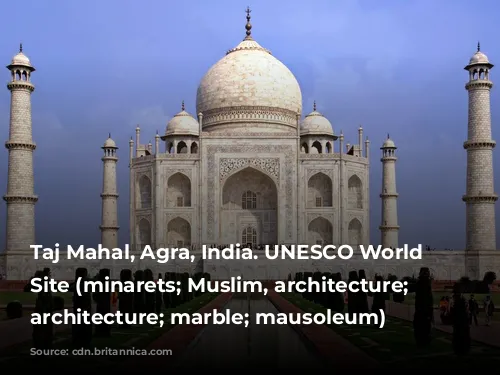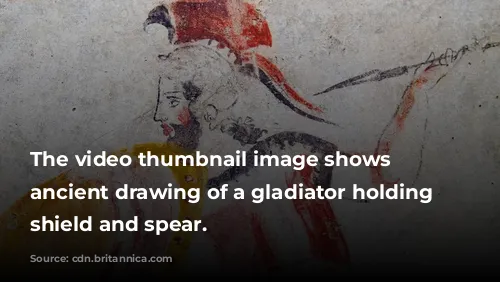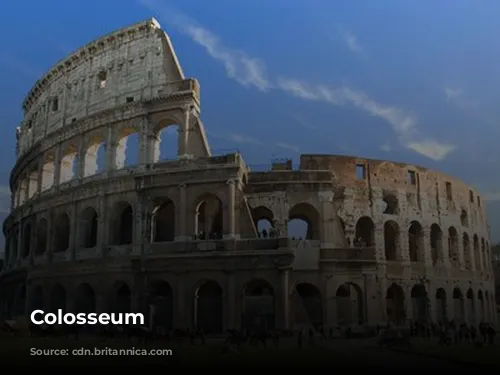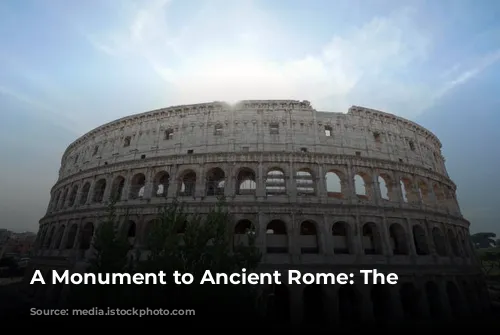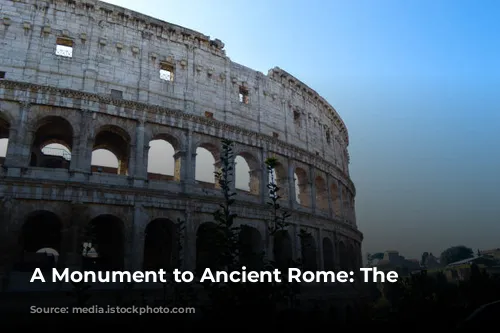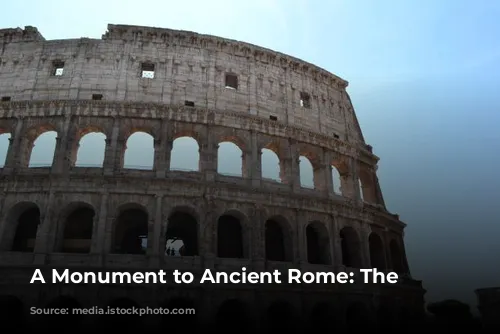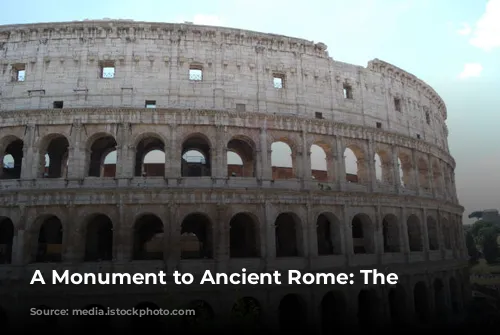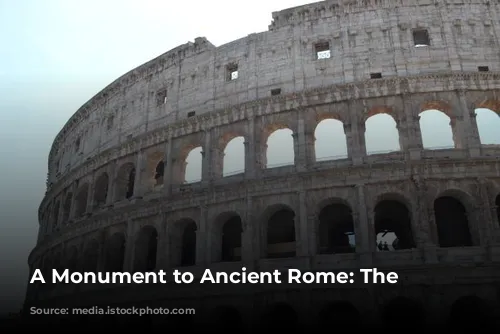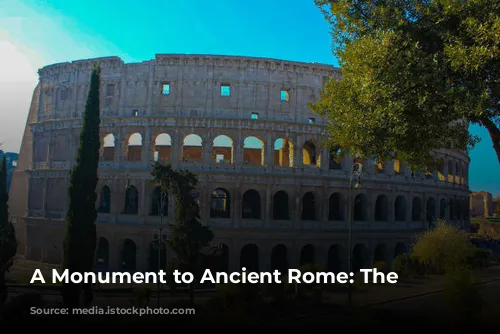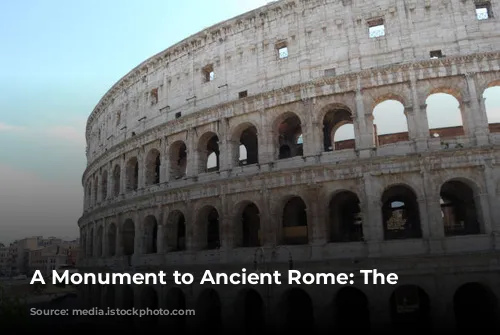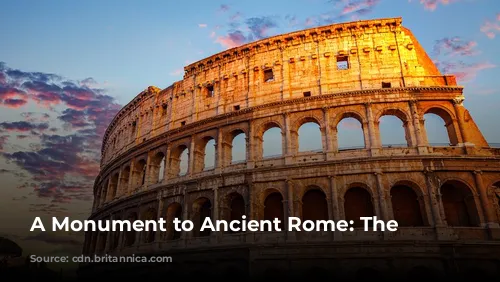The Colosseum, a marvel of ancient Roman architecture and engineering, stands as a testament to the empire’s grandeur. Today, it’s a major tourist attraction, drawing in millions of visitors each year and contributing significantly to Italy’s economy. In 2018 alone, the Colosseum, along with the Roman Forum and Palatine Hill, generated over $63.3 million (€53.8 million), making it the highest-earning tourist site in Italy.
A Long and Tumultuous History
The Colosseum’s history is as fascinating as its construction. After the fall of the Western Roman Empire, the magnificent arena fell into a state of disrepair. During the 12th century, the Frangipane and Annibaldi families, prominent Roman families, used the Colosseum as a fortress. In the late 15th century, Pope Alexander VI even authorized its use as a quarry, a sad testament to its neglect over a millennium. Thankfully, state-funded restoration efforts began in the 1990s, breathing new life into this historical treasure.
A Symbol of Roman Power
The construction of the Colosseum was part of a grand imperial effort to revitalize Rome following the tumultuous “Year of the Four Emperors” in 69 CE. Emperor Vespasian, like other Roman emperors, intended the Colosseum to be a grand entertainment venue. The arena hosted thrilling gladiator battles, exciting animal hunts, and even mock naval battles, offering spectacles to entertain the Roman masses.
From Humble Beginnings to Monumental Structure
The Colosseum’s construction began under Emperor Vespasian between 70 and 72 CE. His son, Titus, dedicated the completed structure in 80 CE, continuing his father’s vision. Emperor Domitian, Titus’s successor, added the fourth story in 82 CE. Interestingly, the funding for the arena came from the plunder acquired during Titus’s conquest of Jerusalem in 70 CE, and enslaved Jews from Judaea were forced to participate in its construction.
A Grand Architectural Masterpiece
The Colosseum, also known as the Flavian Amphitheatre, is an impressive elliptical structure built with stone, concrete, and tuff. It stands four stories tall, measuring 620 by 513 feet (189 by 156 meters), and had the capacity to hold up to 50,000 spectators. The Colosseum was most famous for hosting gladiatorial combat, a brutal but popular form of entertainment in ancient Rome.
A Symbol of Power and Entertainment
The Colosseum’s location, just east of the Palatine Hill, was a deliberate choice. The arena replaced Nero’s infamous Golden House, specifically the artificial lake at its center. This choice was both symbolic and practical. Vespasian, who came from humble origins, replaced the tyrannical emperor’s private lake with a public amphitheater that could accommodate tens of thousands of Romans, emphasizing his commitment to the people and the public realm.
An Architectural Innovation
The Colosseum was a groundbreaking architectural achievement. Unlike earlier amphitheaters, which were often built into hillsides for support, the Colosseum was a freestanding structure. It relied on a complex system of barrel and groin vaults, using travertine for the main structure and facade, volcanic tufa for secondary walls, and concrete for the inner bowl and arcade vaults. Its three lower stories were encircled by arcades adorned with engaged columns in the Doric, Ionic, and Corinthian orders, a design that later influenced Renaissance architecture.
A Place for Spectacle
The Colosseum could seat up to 50,000 spectators, who were protected from the sun by a massive retractable awning called a velarium. Hundreds of Roman sailors were needed to manipulate the rigging that extended and retracted the velarium, a complex system that demonstrates Roman ingenuity. The Colosseum was the setting for thousands of gladiatorial battles, contests between men and animals, and even elaborate mock naval engagements. While it’s uncertain if early Christians were martyred within the arena, the Colosseum undoubtedly played a role in the development of Roman culture and society.
A Legacy of History and Preservation
Throughout the medieval era, the Colosseum was used as a church and a fortress by powerful Roman families. Sadly, it also suffered from damage caused by lightning, earthquakes, vandalism, and pollution. Over a thousand years of neglect led to the disappearance of the marble seats and decorative materials, as the site was treated as a quarry. Thankfully, preservation efforts began in earnest in the 19th century, with notable contributions from Pius VIII. In the 1990s, a major restoration project was undertaken, ensuring that this magnificent structure continues to stand as a powerful reminder of ancient Rome’s glory.
Today, the Colosseum remains one of Rome’s most popular tourist attractions, welcoming close to seven million visitors each year. Regular exhibitions about ancient Roman culture add to the Colosseum’s allure, captivating visitors and reminding them of the rich and complex history of this iconic landmark.
